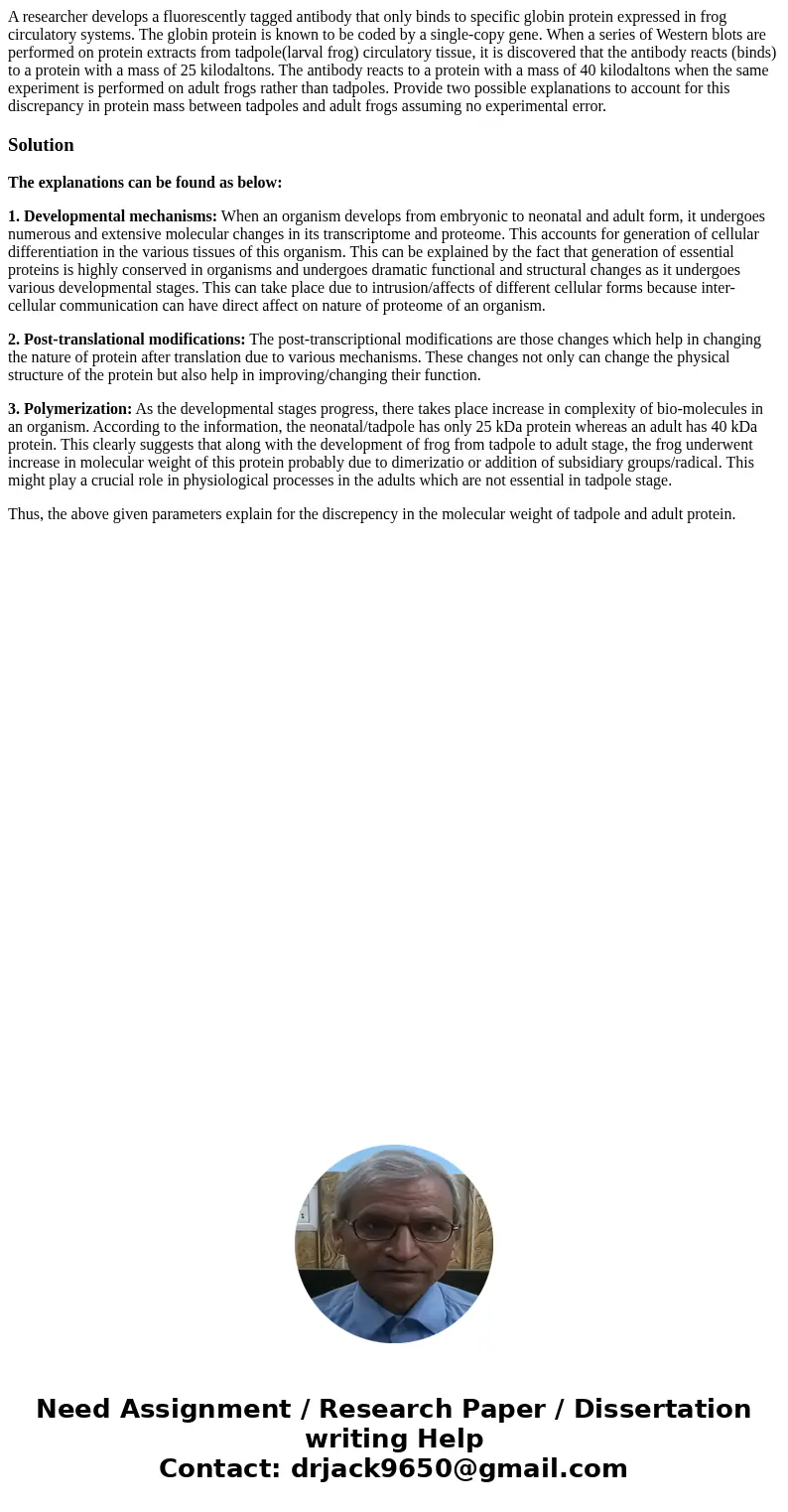A researcher develops a fluorescently tagged antibody that o
A researcher develops a fluorescently tagged antibody that only binds to specific globin protein expressed in frog circulatory systems. The globin protein is known to be coded by a single-copy gene. When a series of Western blots are performed on protein extracts from tadpole(larval frog) circulatory tissue, it is discovered that the antibody reacts (binds) to a protein with a mass of 25 kilodaltons. The antibody reacts to a protein with a mass of 40 kilodaltons when the same experiment is performed on adult frogs rather than tadpoles. Provide two possible explanations to account for this discrepancy in protein mass between tadpoles and adult frogs assuming no experimental error.
Solution
The explanations can be found as below:
1. Developmental mechanisms: When an organism develops from embryonic to neonatal and adult form, it undergoes numerous and extensive molecular changes in its transcriptome and proteome. This accounts for generation of cellular differentiation in the various tissues of this organism. This can be explained by the fact that generation of essential proteins is highly conserved in organisms and undergoes dramatic functional and structural changes as it undergoes various developmental stages. This can take place due to intrusion/affects of different cellular forms because inter-cellular communication can have direct affect on nature of proteome of an organism.
2. Post-translational modifications: The post-transcriptional modifications are those changes which help in changing the nature of protein after translation due to various mechanisms. These changes not only can change the physical structure of the protein but also help in improving/changing their function.
3. Polymerization: As the developmental stages progress, there takes place increase in complexity of bio-molecules in an organism. According to the information, the neonatal/tadpole has only 25 kDa protein whereas an adult has 40 kDa protein. This clearly suggests that along with the development of frog from tadpole to adult stage, the frog underwent increase in molecular weight of this protein probably due to dimerizatio or addition of subsidiary groups/radical. This might play a crucial role in physiological processes in the adults which are not essential in tadpole stage.
Thus, the above given parameters explain for the discrepency in the molecular weight of tadpole and adult protein.

 Homework Sourse
Homework Sourse